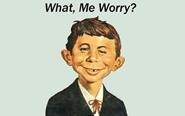Trade Cases

Section 232 Tariffs "More Hole Than Donut?"
Written by John Packard
March 22, 2018
The Section 232 tariffs go into effect tomorrow and already they are being watered down with country exclusions. U.S. Trade Representative Robert Lighthizer is now adding all of Europe, South Korea (one of the biggest importers of Chinese steel), Brazil, Argentina and Australia to the list of countries whose steel exports to the U.S. will be exempt from the 25 percent tariff, joining the previously announced Mexico and Canada.
Trade attorney Lewis Leibowitz told SMU this afternoon that there is “more hole than donut” to the tariffs, which he believes is a positive development.
The owner of a mid-sized service center in the Midwest told us, “I think this party’s over.”
Another service center executive asked, “How can we run businesses with ad hoc decisions made seemingly at a whim with no notice?” He added, “I have to say it makes me a little nervous. If prices already have these tariffs baked in…at $120 per ton since Trump announced…and two-thirds of imports are now possibly exempt, could prices drop that same amount over a month?” He questioned if imports will actually be limited at all and that what the industry just went through was nothing more than “voodoo price increases.”
Not everyone believes the exclusions will result in the demise of the steel industry. We heard from the general manager of a large service center, “While the named country exemptions has a huge impact, it still seems to me that there’s enough remaining traditional tons subject to tariffs to make a difference.” He pointed to 6.7 million tons of imports from countries not yet excluded as still being meaningful.
It may be a little early to predict the collapse of the duties or of higher steel prices, but we did learn from one of our steel mill consulting friends who works with Europe that we can expect offers on European cold rolled and coated products (they are tight on hot rolled).
The exclusion of Brazil along with Mexico and Australia means California Steel and SteelScape substrate supply should be OK, as should AMNS Calvert in Alabama, which gets slabs from Brazil and a sister company in Mexico. NLMK USA does use some Brazilian slabs, and we will have to wait to see if they are able to increase tonnage or if Russia gets added to the exclusion list. Brazil being added is also good news for CSN in Terre Haute, Ind.
A trading company executive sent SMU a note asking, “The USTR just exempted two-thirds of the steel that was imported to the U.S. in 2017. So, are we going to protect our national security by restricting steel imports from countries such as Costa Rica, Malaysia, South Africa, Egypt, the U.A.E., etc.?” This trader noted that the more imports increase supply, the more downward pressure there will be on pricing. He called the seemingly random process of granting countries exclusions unfair.
One of the steel mill executives who told me weeks ago that his company was not concerned about Section 232 reminded me today, “I say what I have said all along: 232 is a moving target and I am not too preoccupied about it. Never believe the hype or the doom-and-gloom predictions from the talking heads.”
World Trade Online reported earlier today that Commerce Secretary Wilbur Ross was asked about the exclusion process, and he outlined additional criteria the U.S. would use to determine whether to grant exclusions for some products. “In order to not grant an exclusion, we will be looking for demonstrated manufacturing capability meeting the technical parameters for the specific article in question,” Ross said. “This could include idled capacity that is being brought back online as a committed thing — not as a prospect, not as a possibility — but as a commitment by the U.S. company, as well as [one that] will include new, expanded capabilities.”
SMU reminds readers that this is a fluid situation made especially so since it is also a political hot potato for the Trump administration, Congress, the Commerce Department and all local communities affected one way or the other by the tariffs and the uncertainty.
“The 232 has been a tool in a complex global trade repositioning. Section 301 vs. China [announced today] is a major escalation from the 232,” one mill exec told SMU today. “NAFTA’s making progress, as well. Lots of moving parts – and many of these parts are intertwined.”

John Packard
Read more from John PackardLatest in Trade Cases

Price: Reciprocal tariff changes and potential new tariffs for Brazil, Canada, others
Trade issues do not seem poised to leave the headlines anytime soon. And as recent developments show, the administration’s tariff policy remains ever-changing.

Bessent on Vietnam: 20% tariff stands, Section 232 protections apply
US Treasury Secretary Scott Bessent told reporters that tariffs for Vietnamese imports to the US are 20% and "specific industries" have trade protections under the Section 232 tariffs.

Steel groups welcome passage of budget bill
Steel trade groups praised the passage of the Big Beautiful Bill (BBB) in Congress on Thursday.

Canada moves to curb steel imports with TRQs
Canada has implemented tariff-rate quotas (TRQs) on steel imports to help stabilize its domestic market.

Commerce launches probe into unfairly traded rebar imports
Here are the details and a case timeline for the rebar trade case recently initiated by the Commerce Department.
